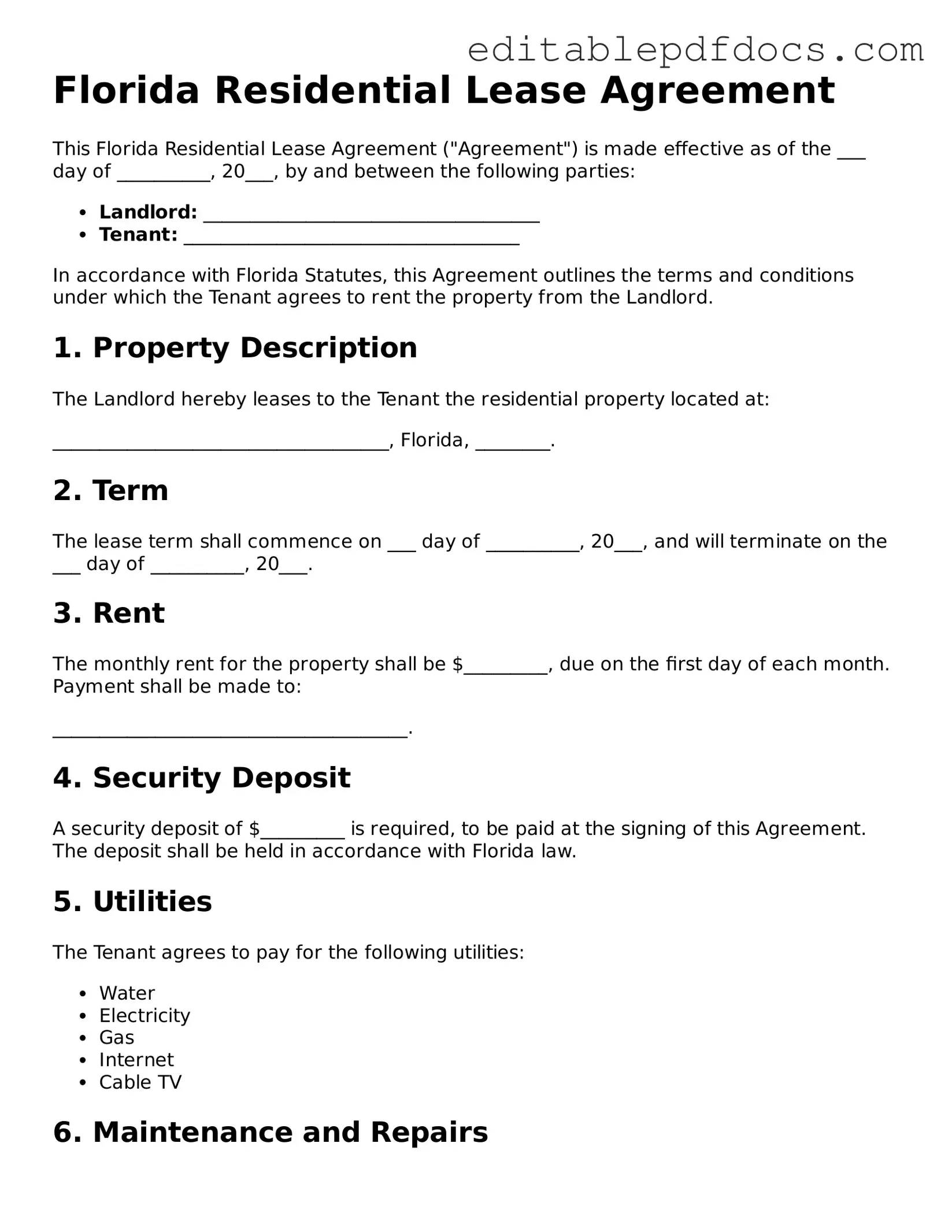Residential Lease Agreement Document for Florida
A Florida Residential Lease Agreement is a legally binding contract between a landlord and tenant that outlines the terms of renting a residential property. This document details the rights and responsibilities of both parties, ensuring clarity and protection throughout the rental period. To secure your rental arrangement, fill out the form by clicking the button below.
Open Editor Now
